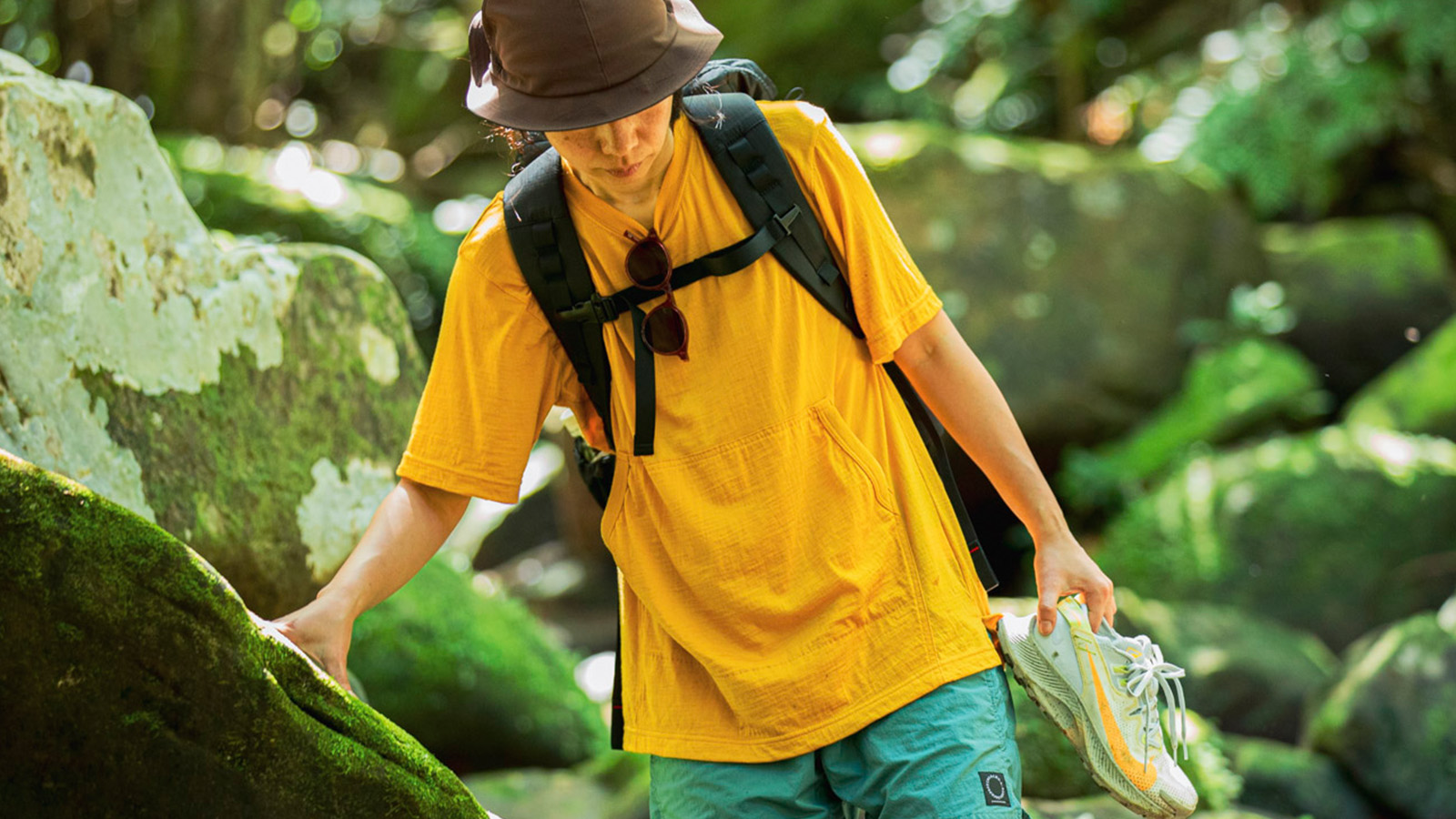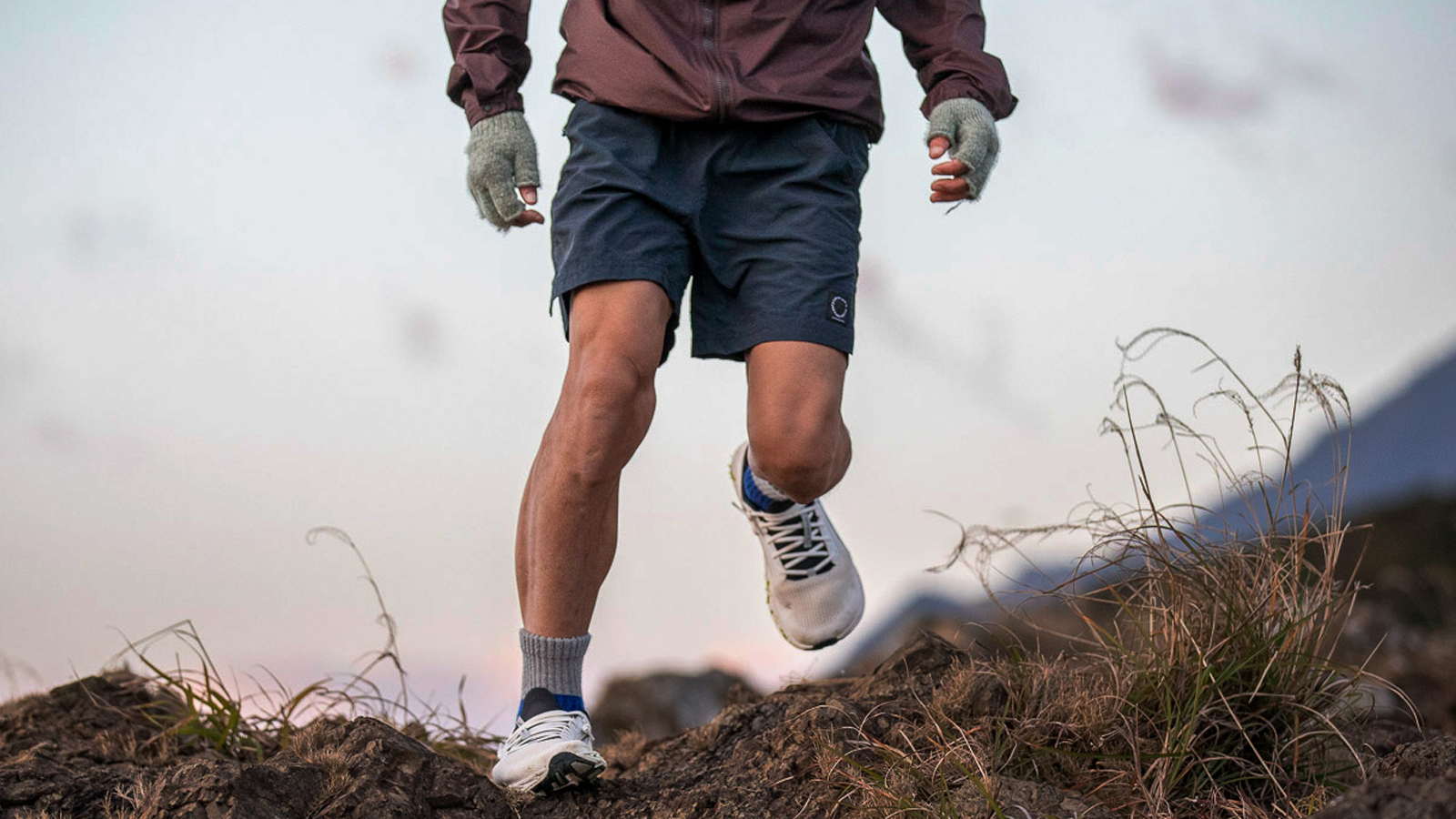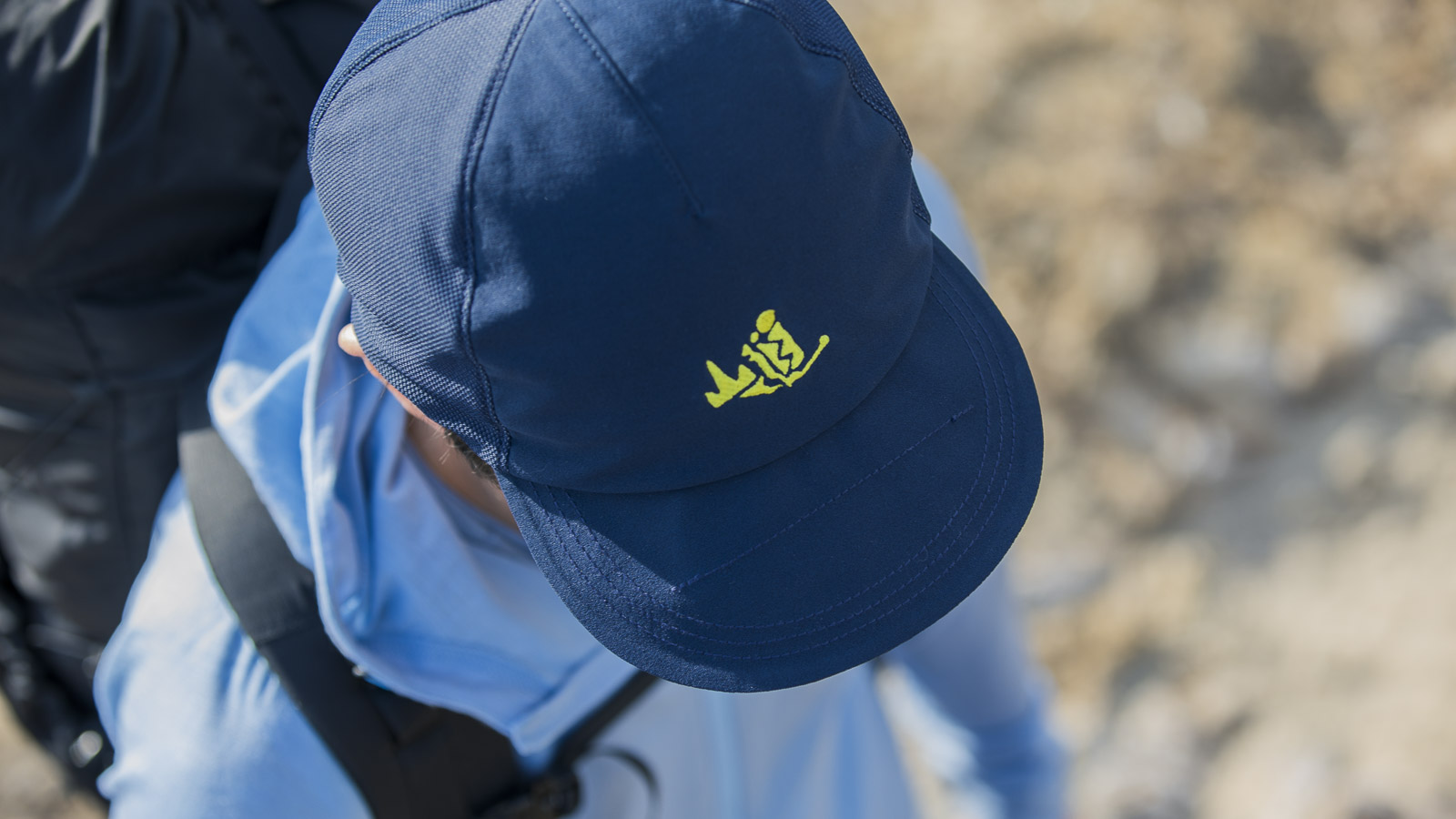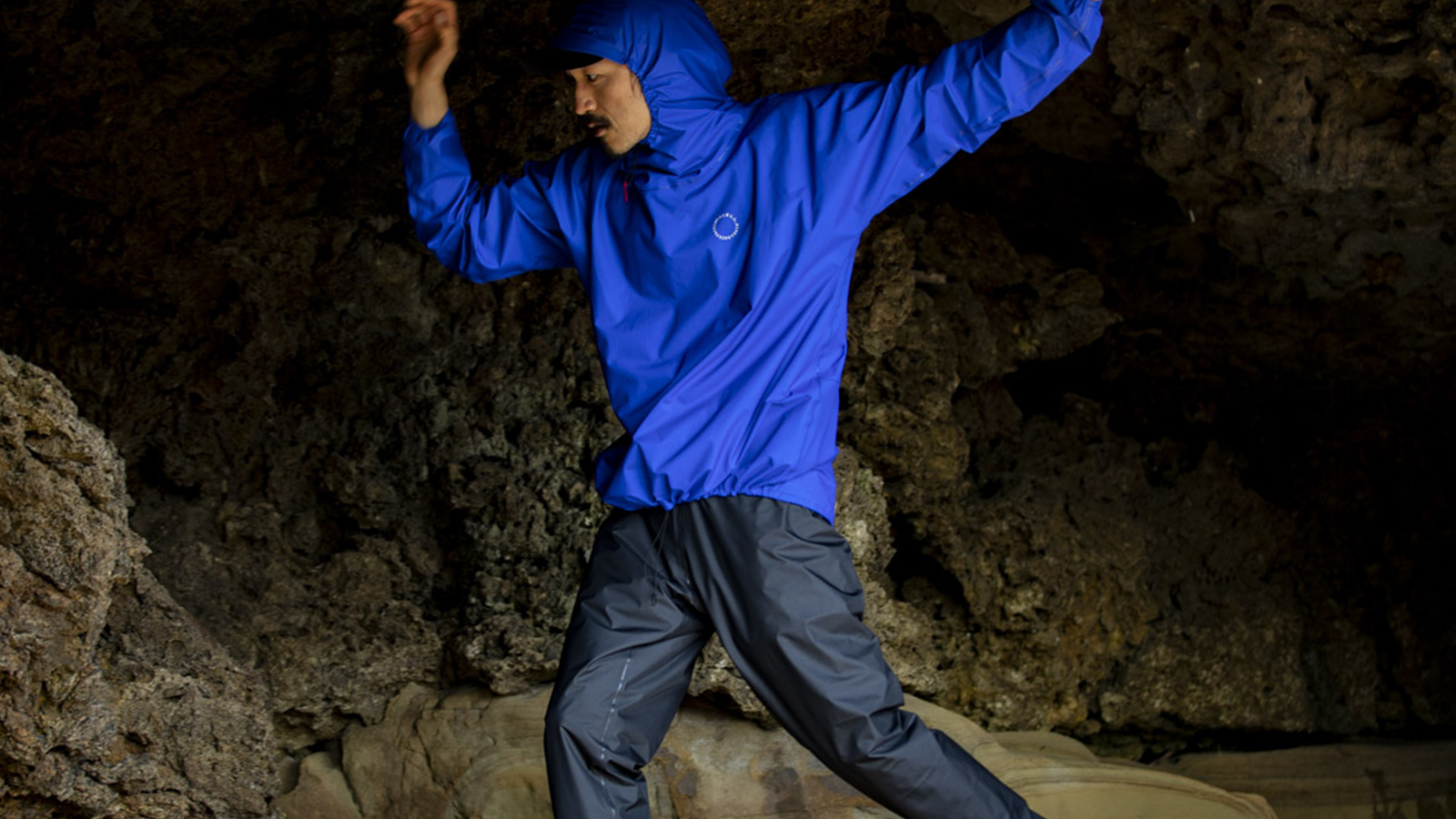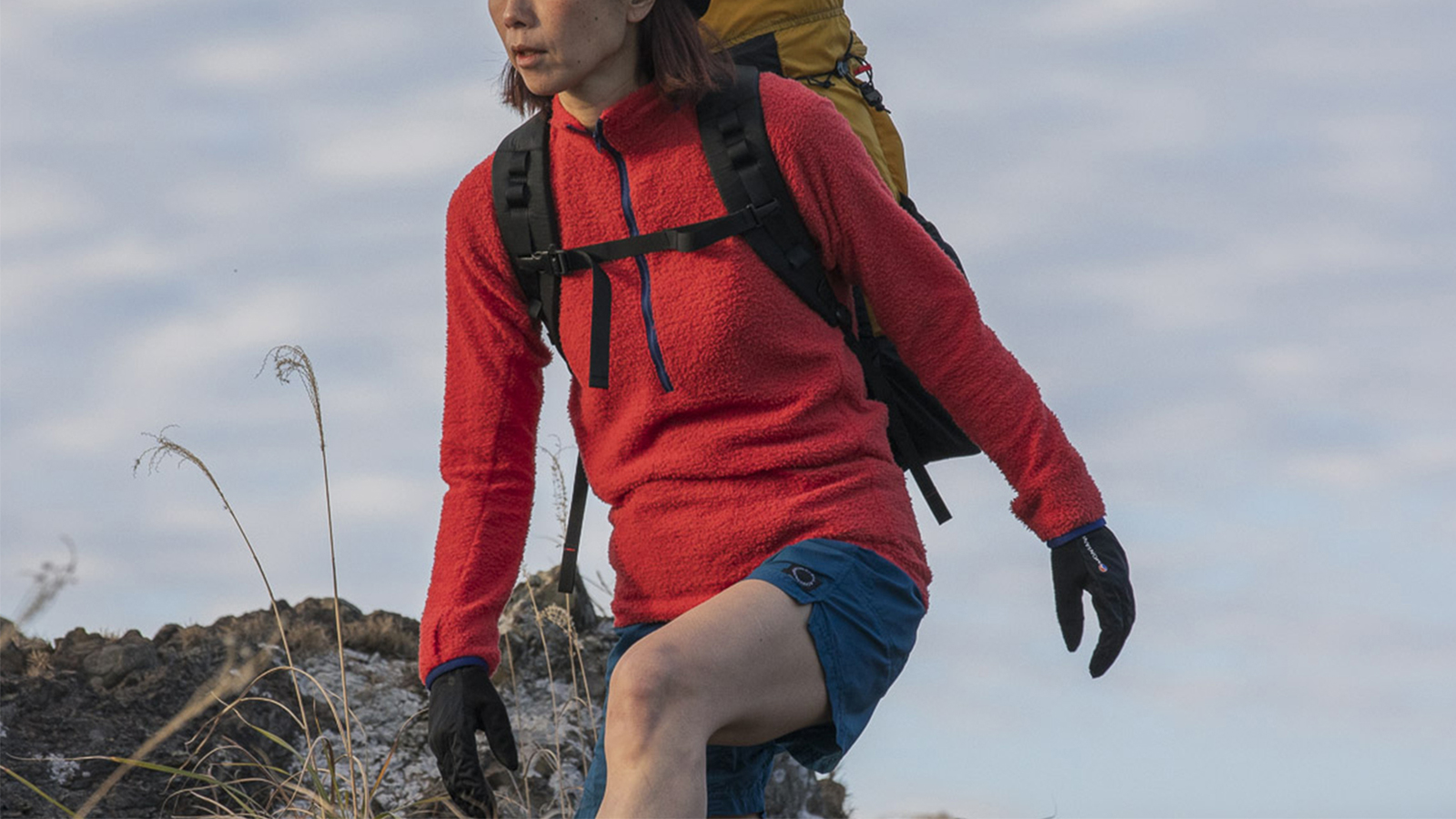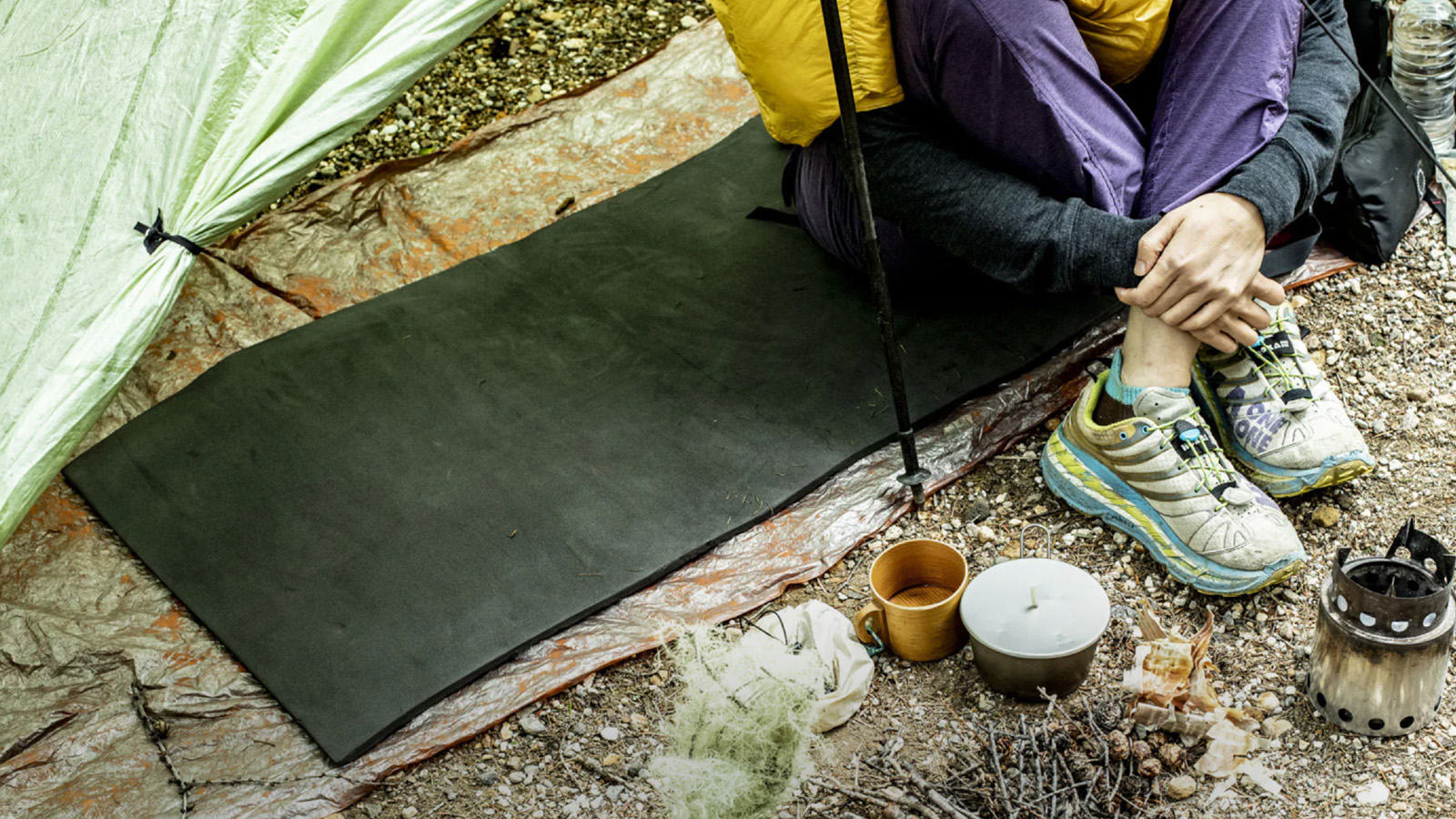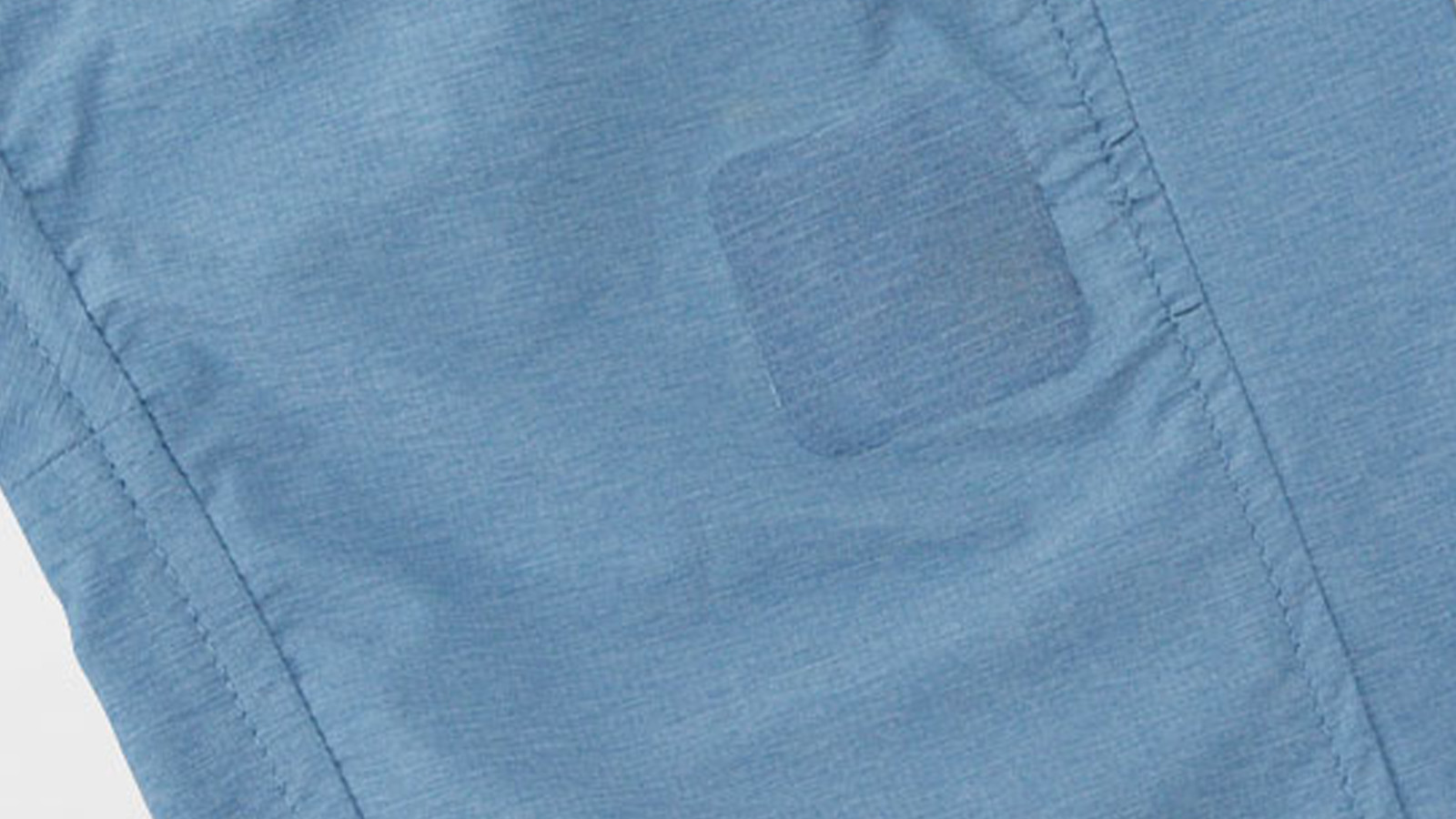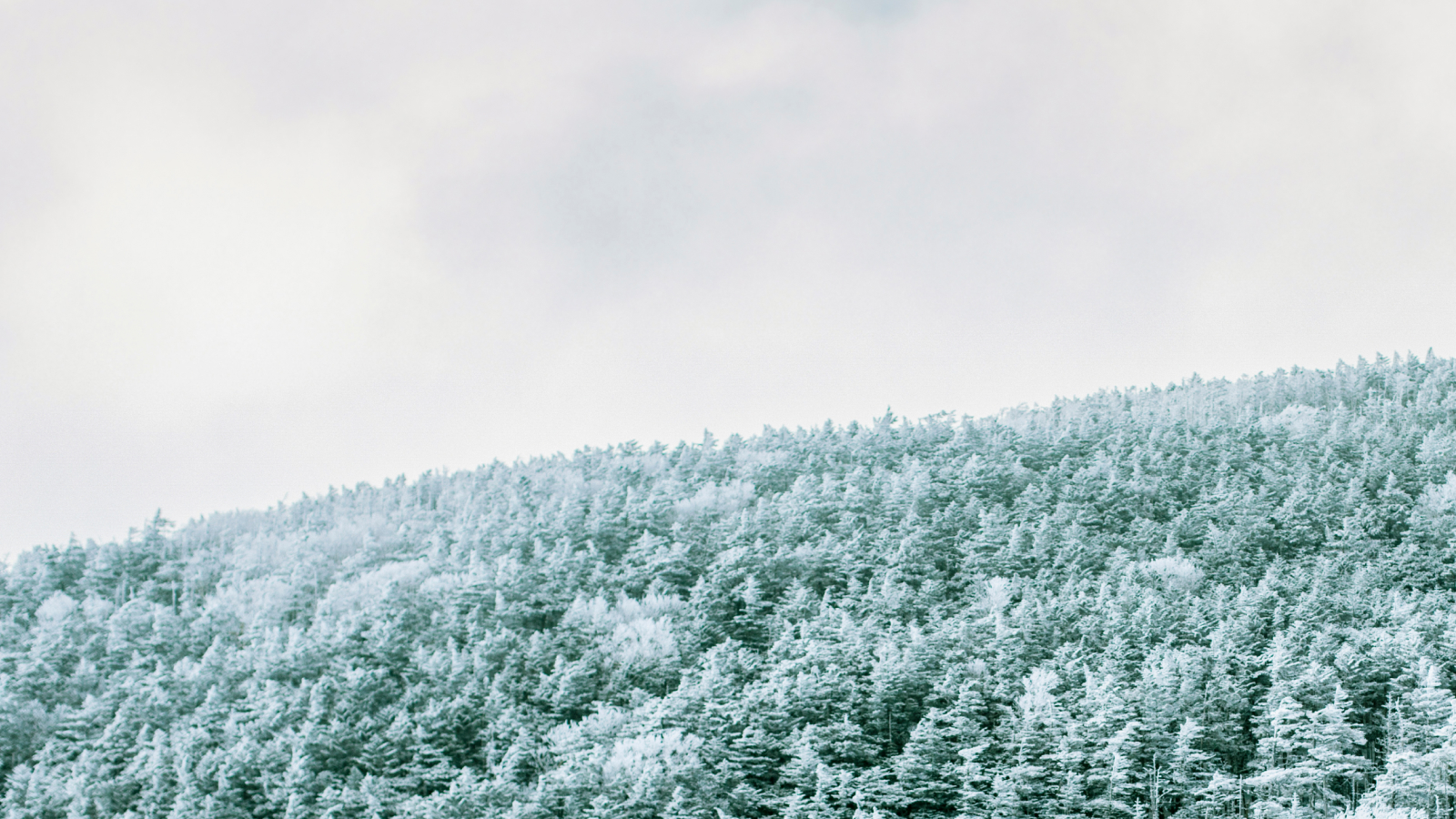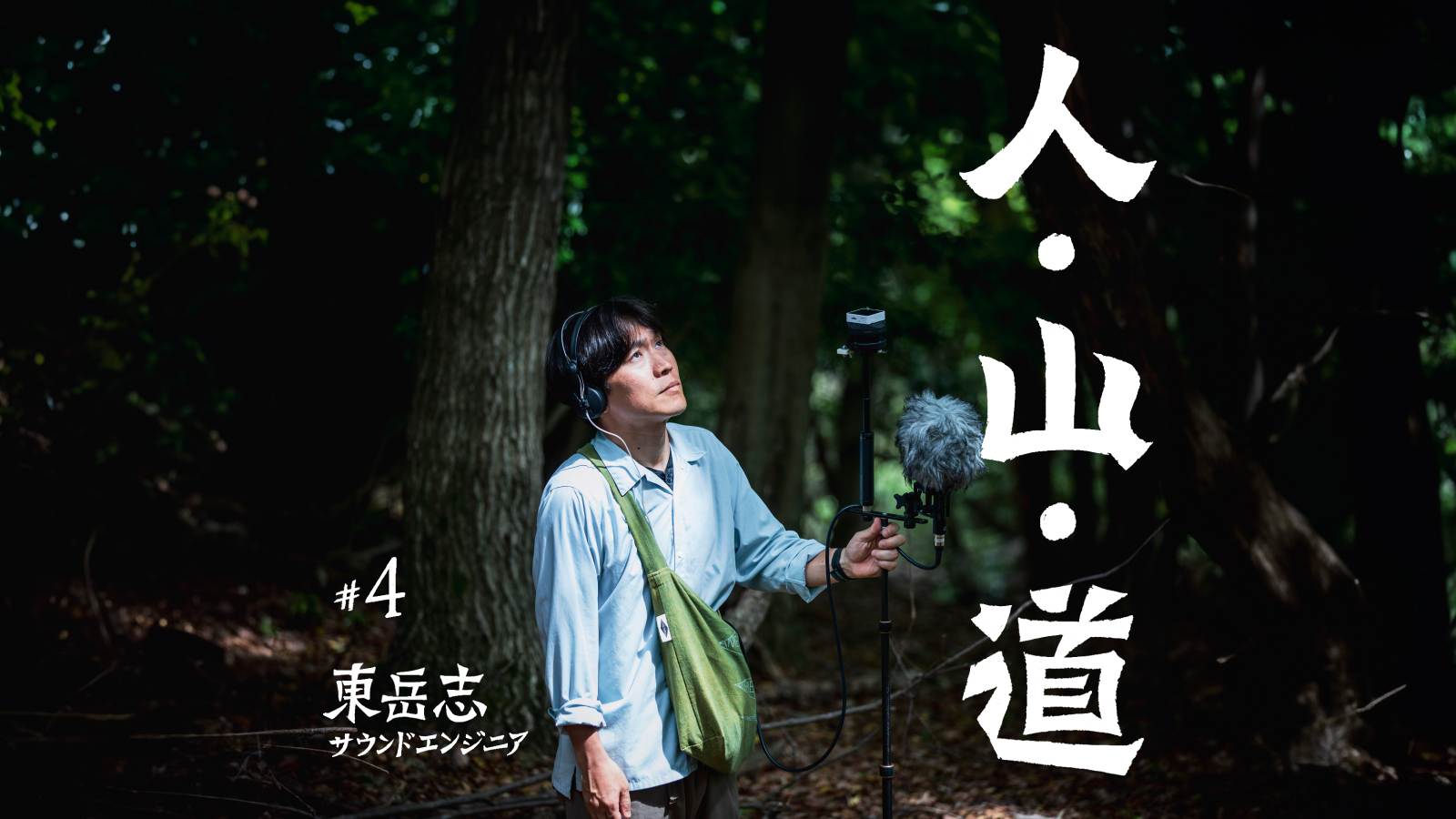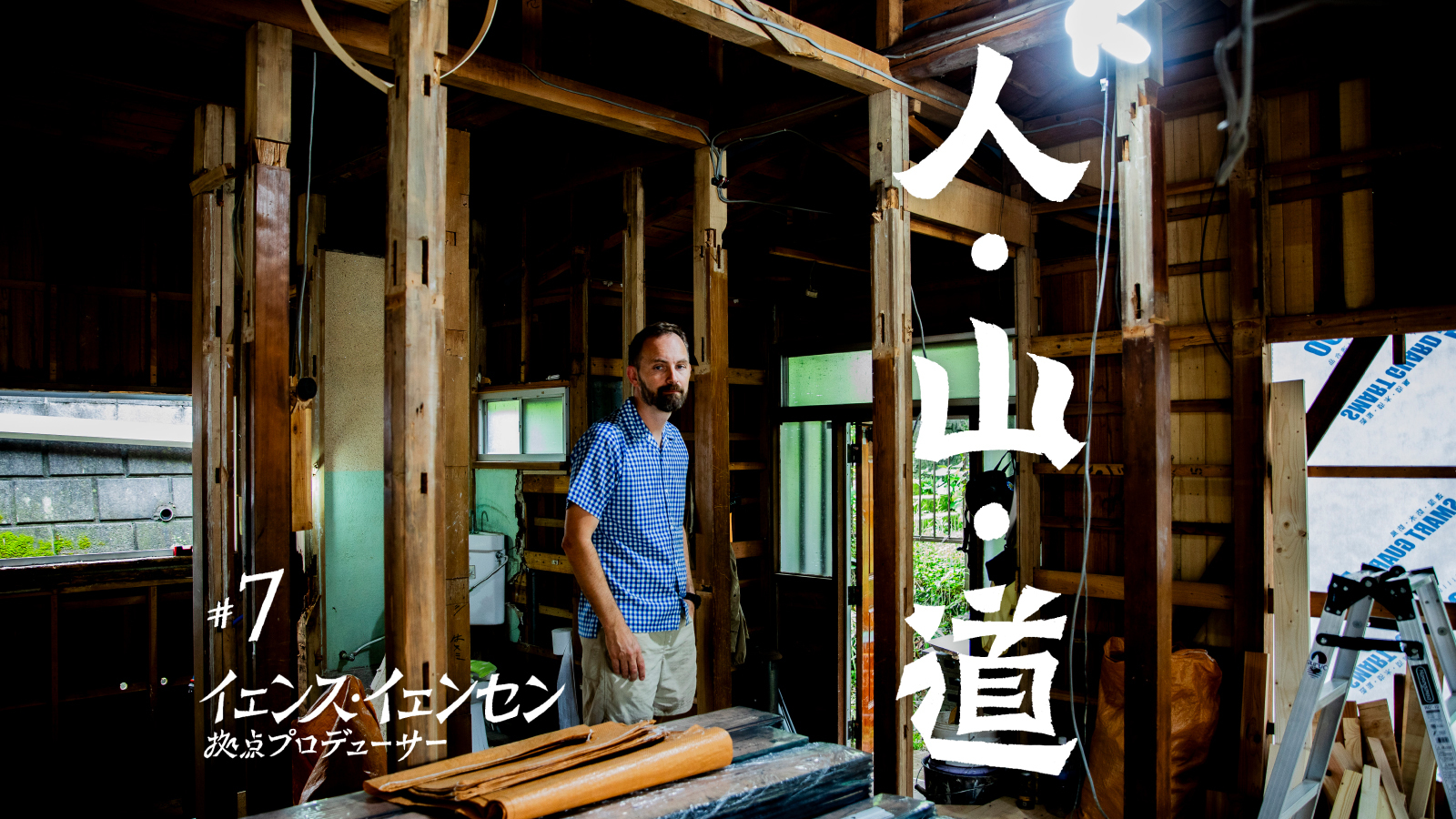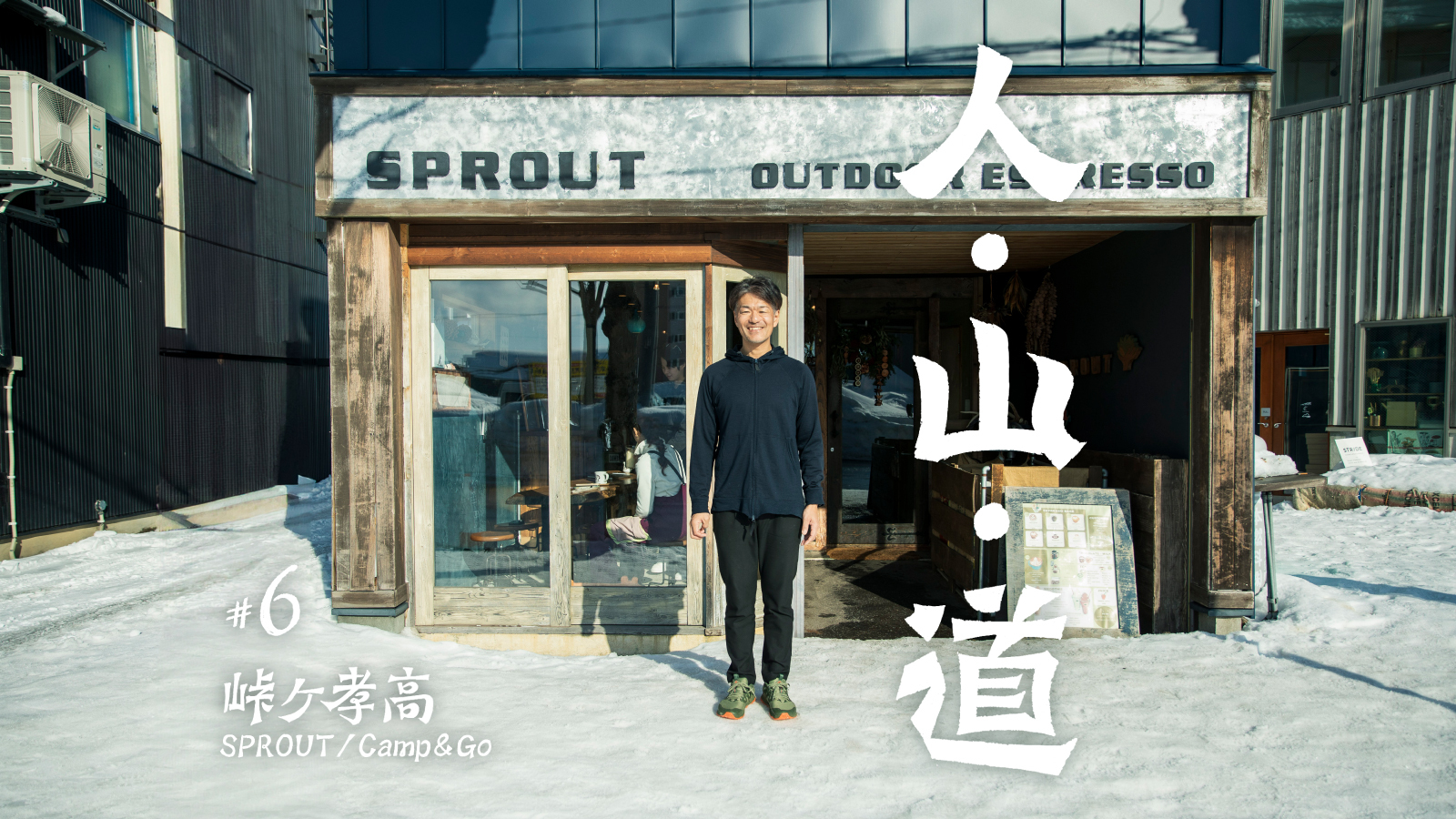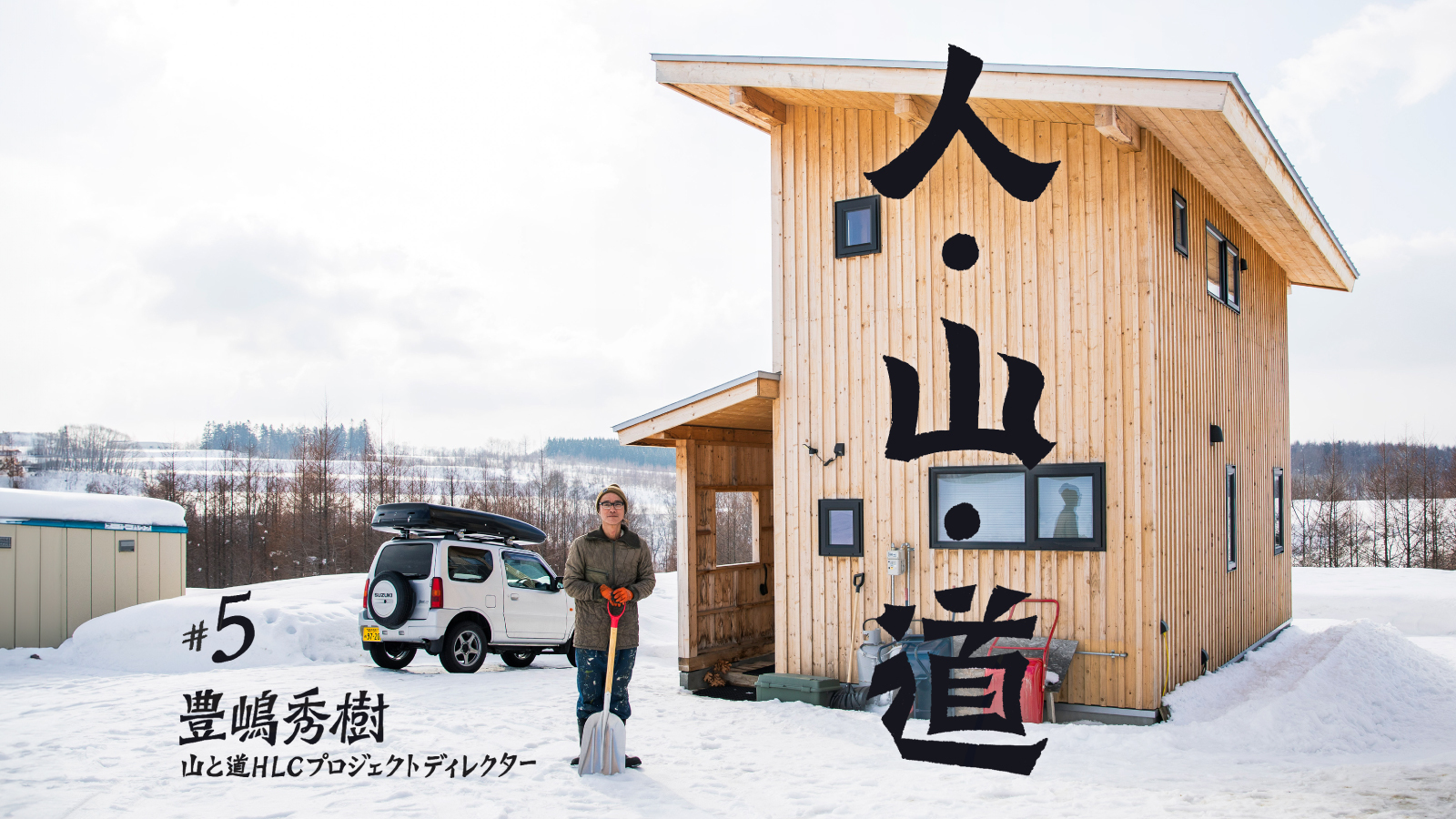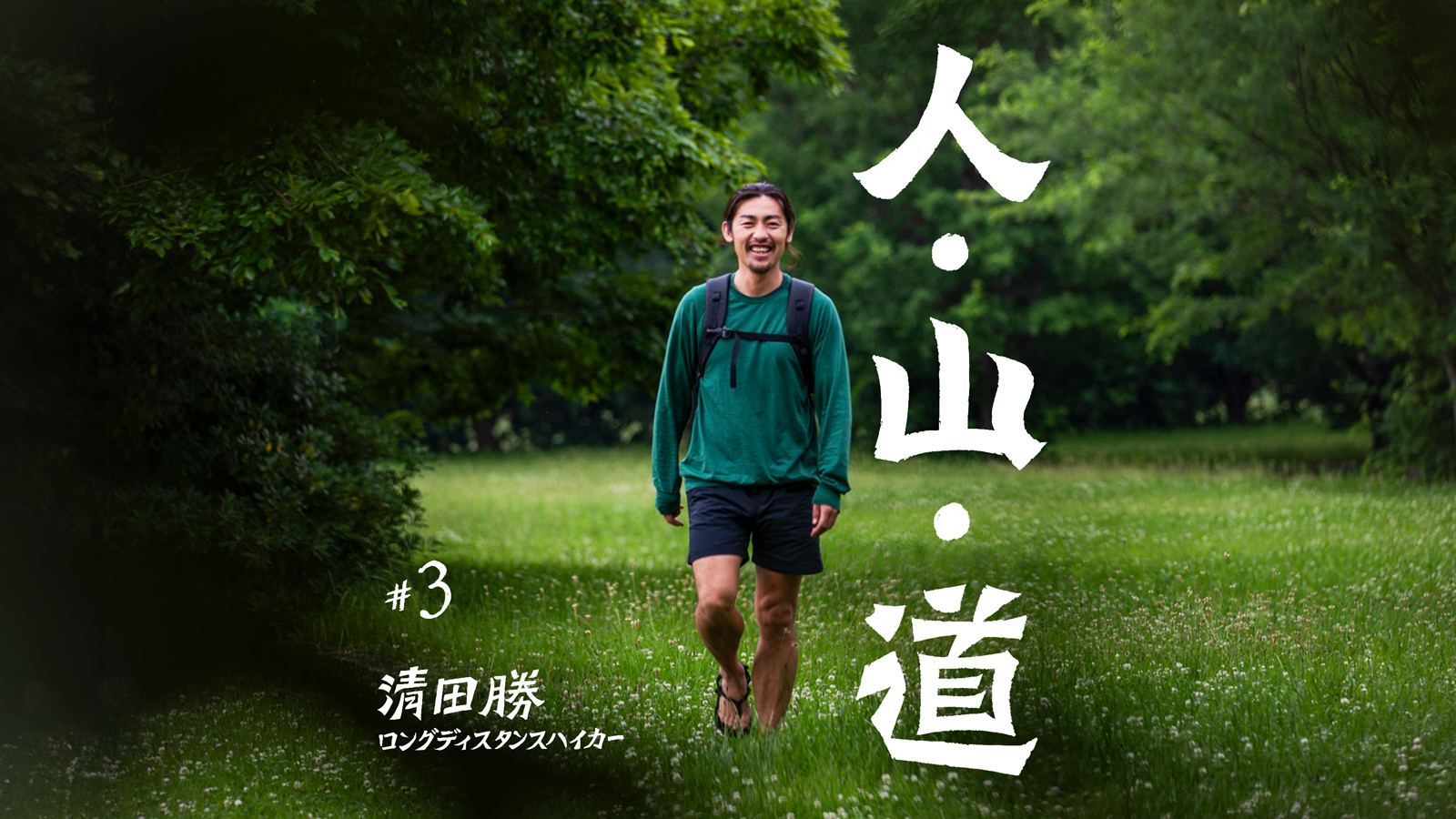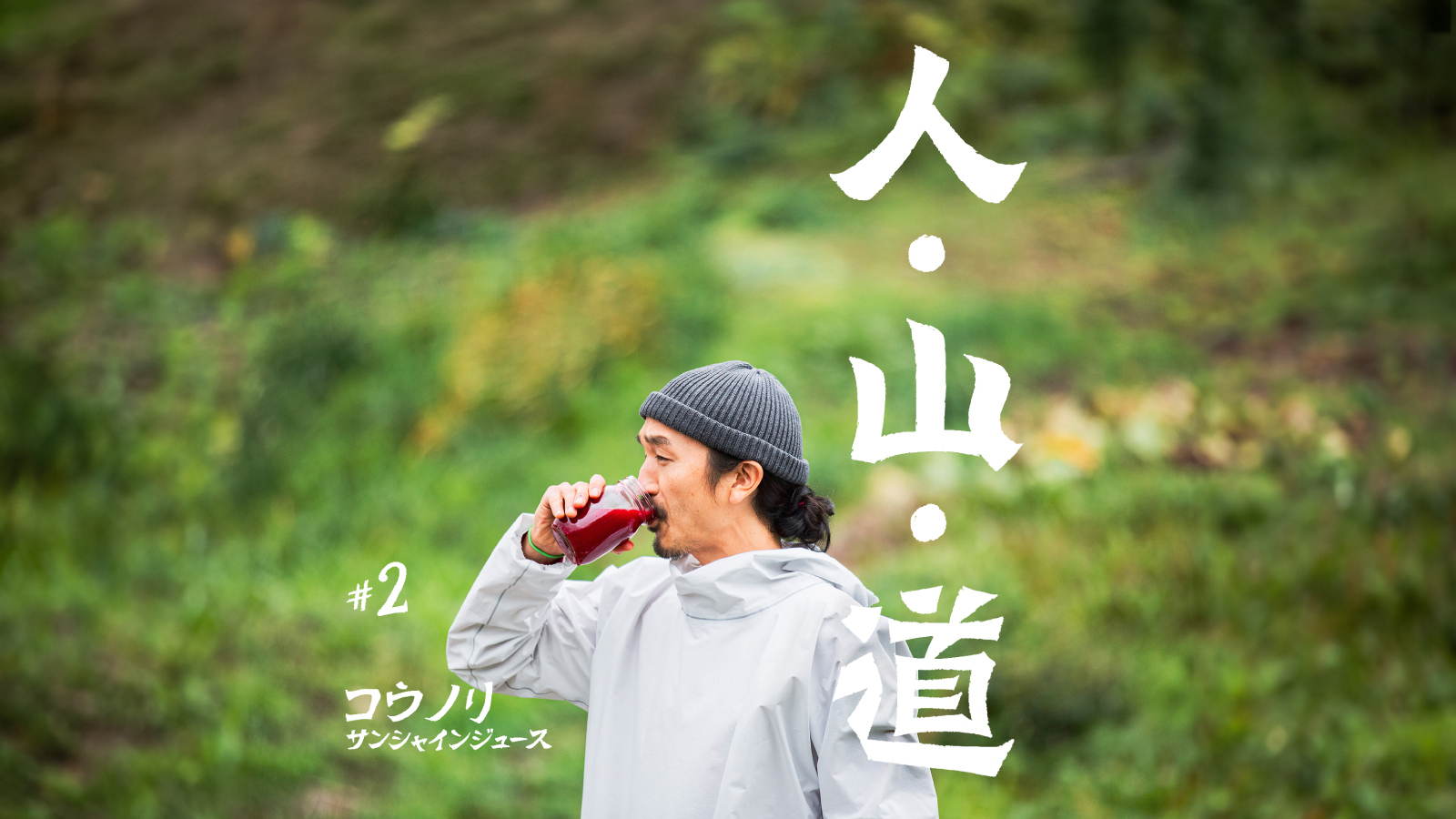#1 Naomi Kazama (Artist)
Photography: Masaaki Mita
#1 Naomi Kazama (Artist)
Photography: Masaaki Mita
In People, Mountains, Paths: The UL Way, we interview artists, designers, hikers and entrepreneurs whose lives and work intersect with Yamatomichi. We ask them how they chose the path they walk and the things they carry with them –– a theme that is at the core of the ultralight hiking ethos. The first guest in this series is Hokkaido-based artist and yoga practitioner Naomi Kazama.
“I realized that I didn't need any patterns.”
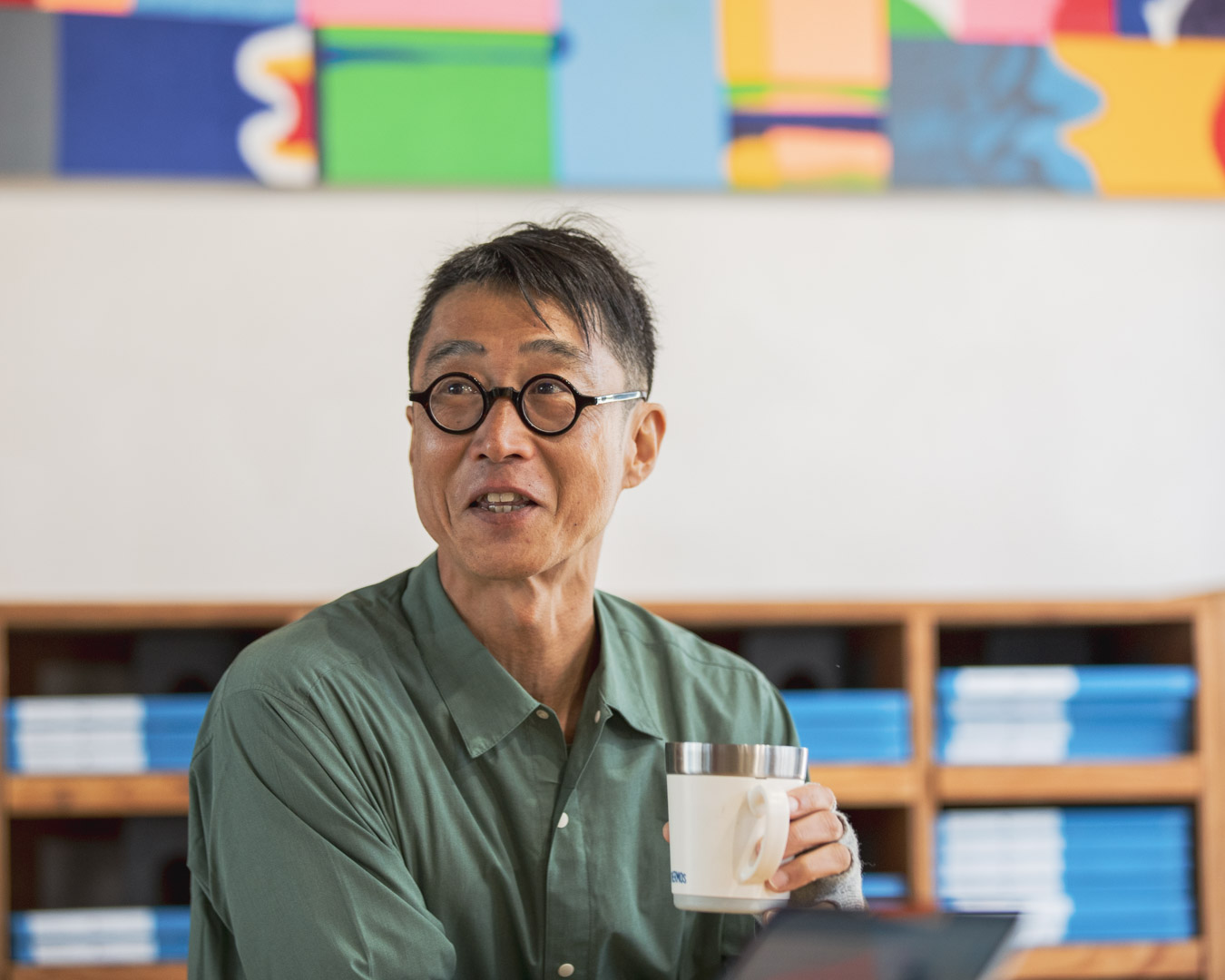
Naomi Kazama was in his early twenties, studying abroad, when he first met the US artist Shepard Fairey in San Diego, California. The encounter with Shepard –– known for his political street art, murals, collages and prints –– was life-changing for Naomi. Fascinated with the artist’s silkscreen printings, made by pressing ink or paint through a mesh stencil, Naomi decided to stay on as an apprentice to learn what he could about the medium.
By 2001, Naomi was back in Japan, running a street art gallery called Dyezu-experiment, in Tokyo’s Nakameguro neighborhood, and creating his own art as a member of the New York collective Barnstormers. Around 2017, Naomi, who had moved to Makkari village, in Hokkaido, met Yamatomichi’s founder Akira Natsume, to discuss the possibility of working together.
“A tent printed with my artwork that I had made with another brand broke, and I was considering how I might upcycle the fabric. A friend in Kamakura introduced me to Natsume. I asked him if Yamatomichi could turn the tent fabric into a sacoche, and that’s how it all began. After that, I started Big O events at Yamatomichi’s store and gatherings,” says Naomi.
Big O is the upcycling art project that Naomi started in 2012. The “O” reflects the message: Through upcycling and site-specific silkscreen printing, Naomi is hoping to spread awareness about a circular, more sustainable approach to consumption. Ideally, that would mean upcycling more clothes and other items that are no longer being used and choosing cotton that’s grown organically instead of with conventional methods that can harm the environment. Naomi’s Big O project has evolved over time, and his recent work with Yamatomichi has coincided with a startling new direction in his creative output.
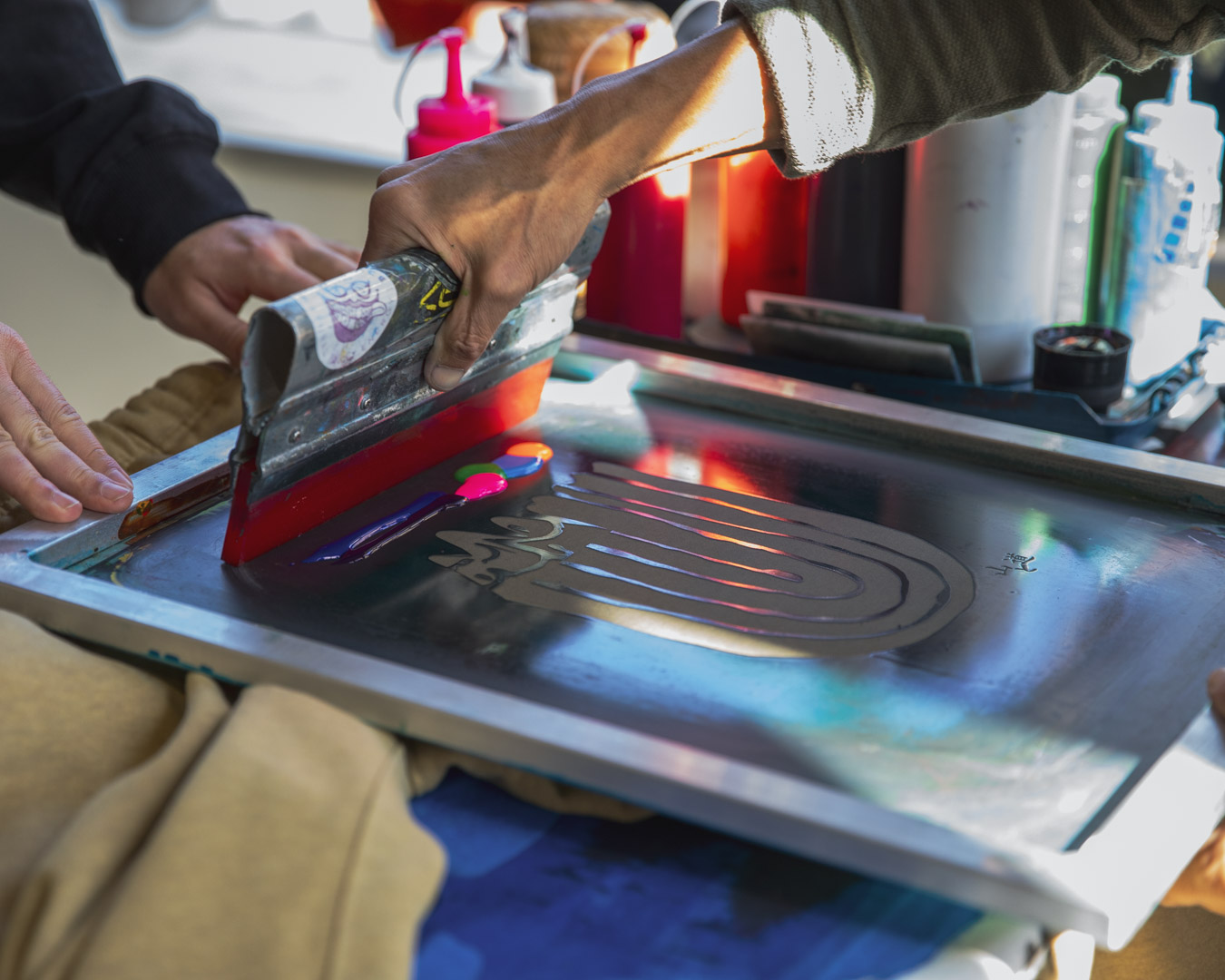
Pressing colors through a stencil for a Big O event at Yamatomichi Zaimokuza
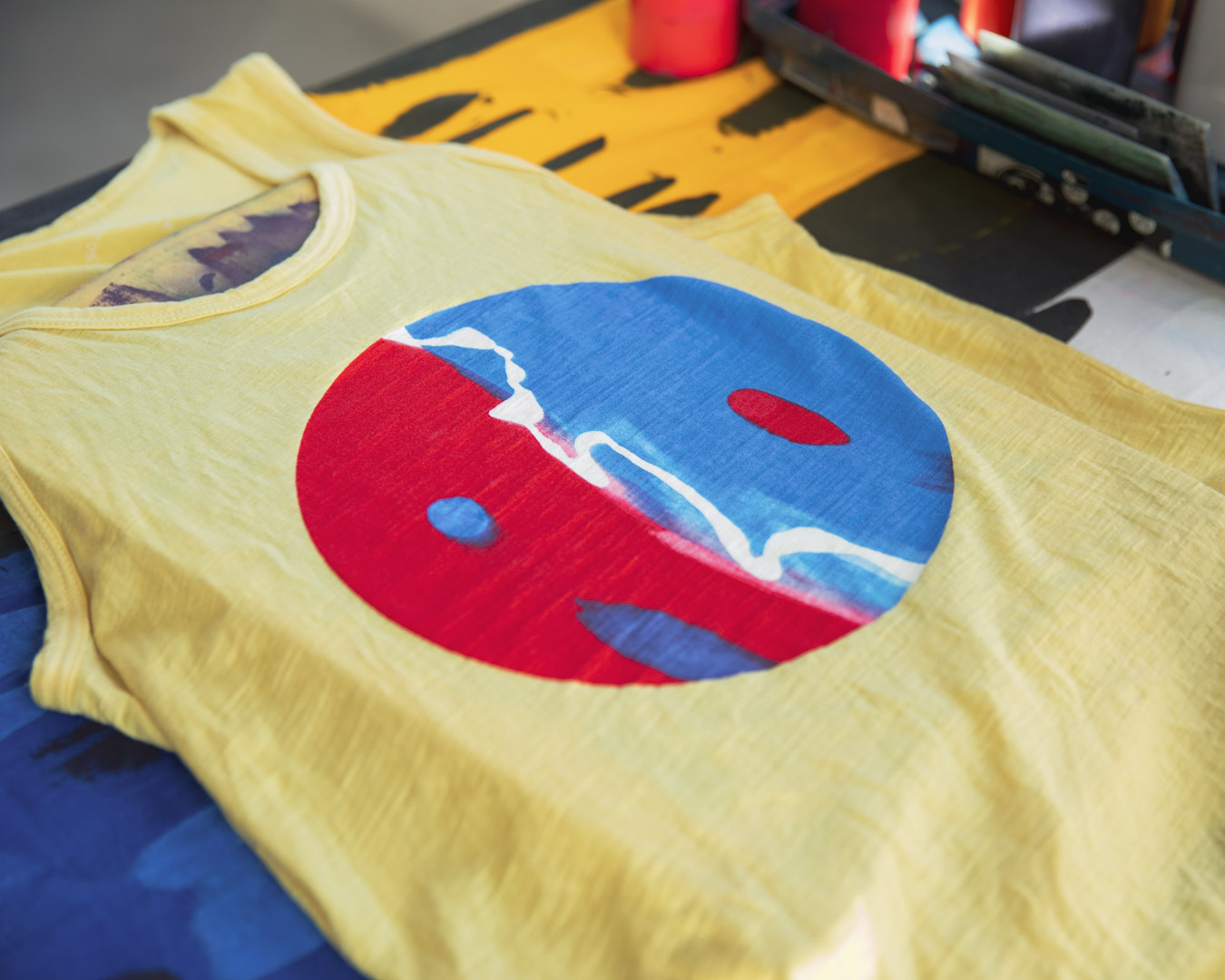
Naomi communicates with customers to create unique, one-of-a-kind pieces
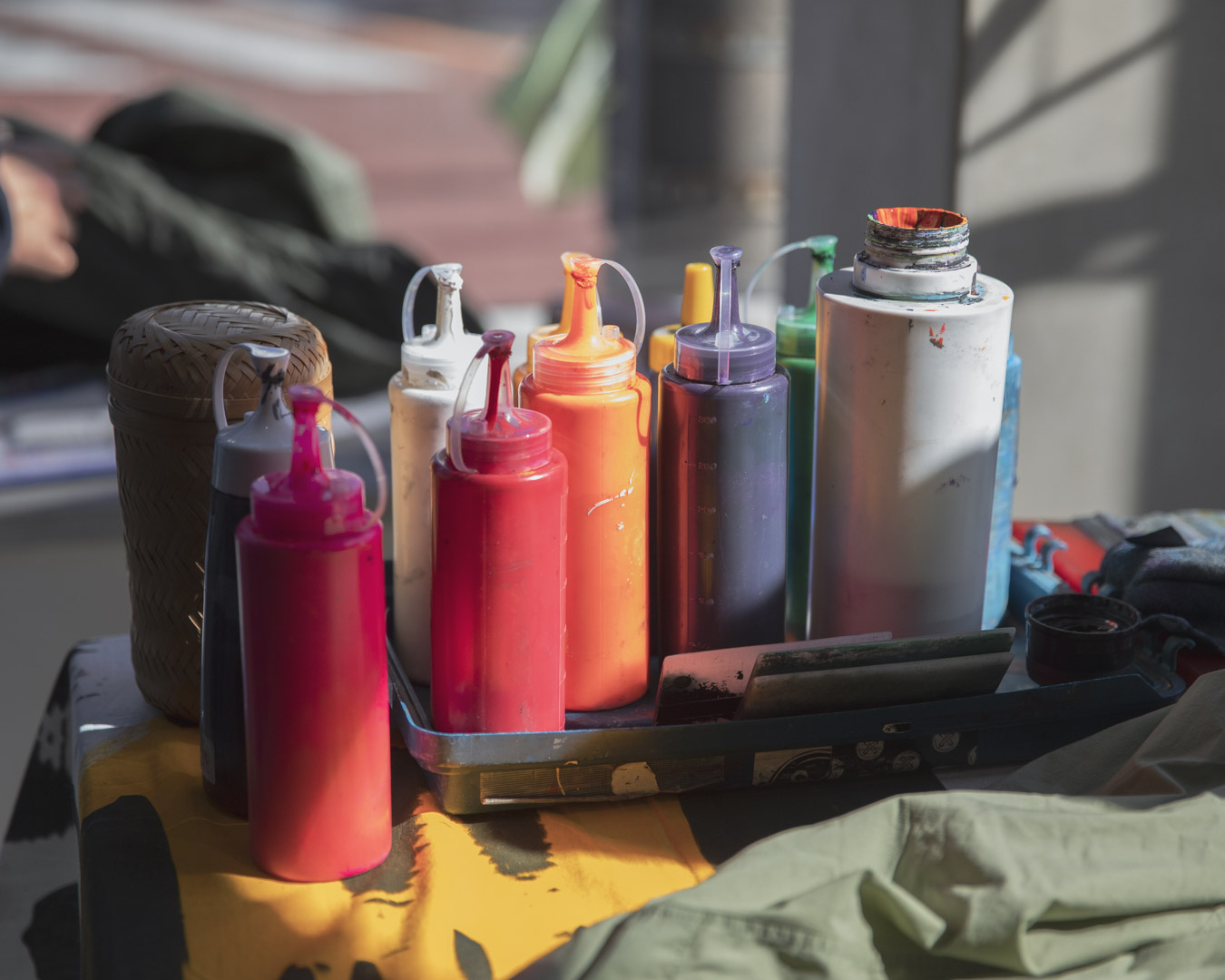
Squirt bottles full of Naomi’s ink
Typical screen printmaking uses a pattern and separate mesh stencils for each color. But Naomi prefers to use only a single stencil. He adds several colors at once, often within a circular frame, so patterns, random and organic, emerge spontaneously. That hasn’t always been a hallmark of Naomi’s work.
“Originally, I was creating patterned, graphic stencils. One day, while printing mindlessly on the street for ‘Big O,’ I suddenly realized, ‘I don’t need patterns,’” he says. “I don’t know why it’s better, but it became clear to me that patterns weren’t necessary. Patterns are like human thoughts and concepts. They’re like borders: drawn for human convenience to designate countries, even though there are no actual lines on Earth.”
Removing patterns from his work was liberating for Naomi. His thoughts expanded as he moved away from the medium’s conventional rules. “In that moment, it felt like the clock hands stopped, the falling leaves from the trees froze in mid-air, the earth stopped rotating, people stopped walking –– it felt like I alone had realized something incredible. Everything connected within me, and I knew I had to cherish this realization. The impact was immense,” he says.
“When I look back, everything that I did up until then was just an imitation of someone else’s work, most notably Shepard’s. Although I had said that it wasn’t imitation because the motifs were different, I knew, deep down, that it was. I always wanted to create something original, and at that moment, I discovered a form of expression that resonated with me.”
At a recent Big O printing event at Yamatomichi Zaimokuza, in Kamakura, Naomi squirts ink onto a mesh screen and, with a squeegee, slowly presses the colors through and onto a T-shirt. Each time, the result is different. Watching him makes it easier to understand what he means when he talks about “the ink behaving freely.”
“Working with a blank screen brought many benefits –– it’s similar to the concept of UL hiking. Without patterns, I only need one stencil. My equipment is lighter and that allows me to work in different places. It wasn’t about creating new or old designs; it was about printing on the spot and having people see it as a new pattern each time. There’s a timeless aspect to it.”
In 2021, Naomi showed his work in Hokkaido at an exhibition titled ApenhaveI –– a reordering of the phrase “I have a pen”. The symbolic reversal of roles reflected in that title has become the inspiration for his recent work. “It’s about removing as much intention as possible when creating art, letting the liquid take over instead of my will. It’s not about ‘I’ or ‘my,’ but rather the pen having control over me, not the other way around,” he says.
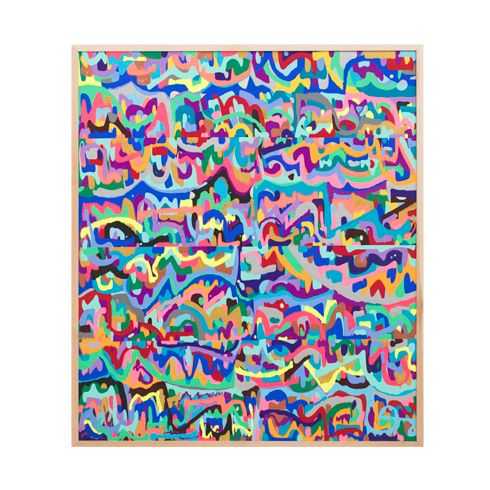
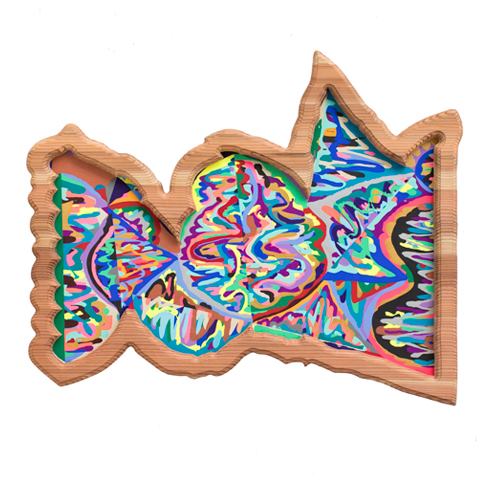
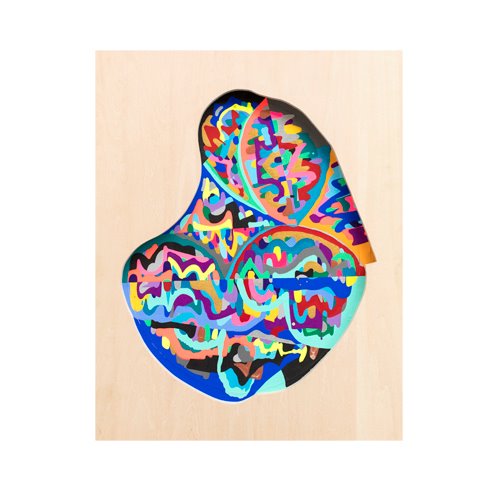
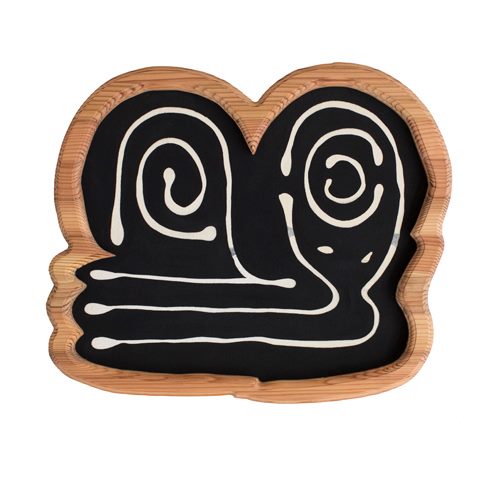
Naomi’s work for his ApenhaveI exhibition in Hokkaido
The Mindset of Letting Go
For Naomi, creativity involves removing his own ego. It’s about focusing his mind on letting go as he works so that he makes himself open to everything. Letting go involves a process of questioning what’s necessary in life. That resembles the UL philosophy that is at the heart of what Yamatomichi does: You take with you only what is essential, whittling your load until it is as lightweight as possible.
Naomi likens the act of letting go in his art –– what he calls his “journey in blank screen printing” –– to practicing Ashtanga yoga. Though he’d been doing yoga for years, Naomi only decided to take up the more dynamic, demanding Ashtanga style five years ago, after watching a DVD of renowned surfer, surfboard shaper and yoga practitioner Gerry Lopez.
Naomi’s decision to switch to Ashtanga led to a personal breakthrough. “Ashtanga yoga is referred to as moving meditation, and by moving with your breath, you forget yourself and approach a state of nothingness,” he says. “It’s about expanding your space, relaxing, and entering that space with your breath. As if you were stringing beads together while breathing. Everything grows by a repetition of expansion and contraction, right? As you inhale, you expand, and as you exhale, you enter the space you’ve created.”
“With Ashtanga yoga, you do the same poses every day. But because of that, no two days are the same. For example, one day you might feel your body stretch more than the day before, or you might wonder, ‘Why can’t I do today what I did yesterday?’ This awareness of the ego allows you to let it go and accept what you can do in the present moment, bringing many wonderful gifts. There is a saying by Sri K Pattabhi Jois, the founder of Ashtanga yoga: ‘It is not your body that is stiff but your mind.’ He means that all problems and everything else are always within oneself,” Naomi says. “I’ve finally started to clearly connect this way of thinking about creativity and yoga.”
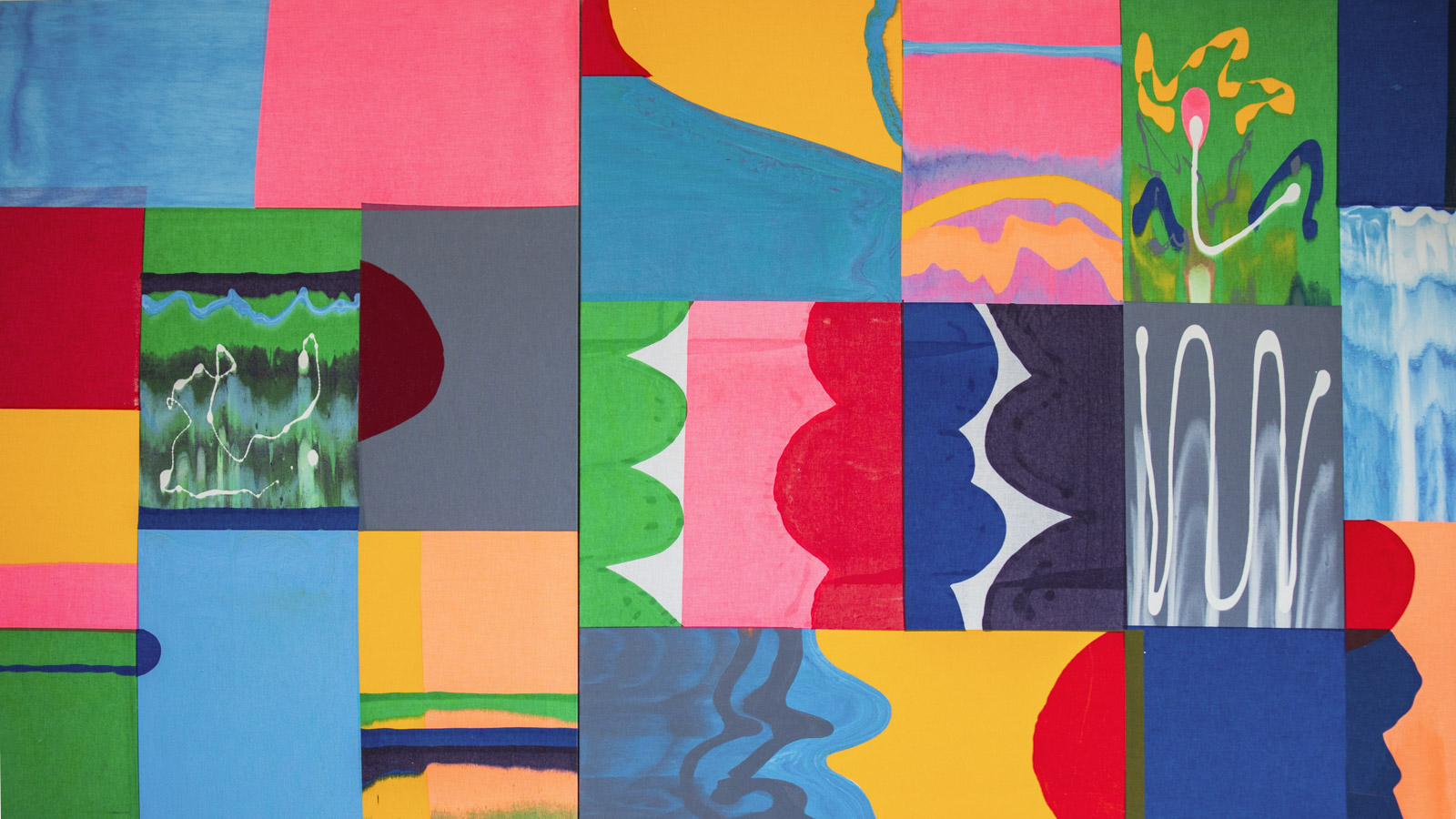
The art Naomi created during a recent Big O event at Yamatomichi Zaimokuza
Occasionally, for Naomi, inspiration comes from unexpected places. “The other day, at a Big O event, a customer arrived in a wheelchair –– he was unable to walk on his own due to cancer. He asked me a lot of questions about the prints and my work. Most people just receive their prints and say thank you. But this customer seemed to want to take in everything that was happening at that moment. I can’t say for sure if he had truly let go, but having a different perspective than most people probably made it easier for him to feel things that others might miss. When you’re only thinking about yourself, clinging to your ego, you miss out. But when you let go, as he did, you feel a greater sense of wonder and joy in new encounters. Meeting him made me realize that I was overlooking something significant. It reminded me how important it is to breathe; that I just need to take slow, deep breaths.”
Naomi acknowledges that the idea of removing all patterns from his art –– creating it without intention –– is conceptual. It might not even be possible, he says. To explain what he means, he draws on an anecdote from Zen in the Art of Archery, a 1948 book written by the German philosopher Eugen Herrigel. “Herrigel was a mystic who was interested in Zen, and as a university lecturer, he came to Japan to study. In the West, people tend to construct philosophy with their minds. In the East, it’s more about knowing through doing, and Herrigel was advised to practice a ‘way’ (dō). Herrigel chose archery and started learning from a famous teacher. At first, he couldn’t even draw the bowstring, but his teacher seemed to do it effortlessly, using no apparent force. Herrigel thought, ‘He must be using great strength!’ but he learned that it was all about breathing. The teacher talked about ‘tying the tanden’ (a point below the navel and focus for internal meditative techniques) which allowed a person to draw the bow without relying on muscles. After about a year, Herrigel managed to draw the bow. When it came to releasing the arrow, the teacher said, ‘Don’t aim! Wait for it to happen.’ This is what I aspire to. Repeating the same thing every day without ego, letting go, and allowing what comes from that state to emerge. That might be what I most want to create. If I can always forget my ego and let it happen, it would be wonderful. When you’re in this state of deep practice, ambition and the mind disappear. Now that I finally understand this, I want to deepen my yoga practice and apply that to my creations.”
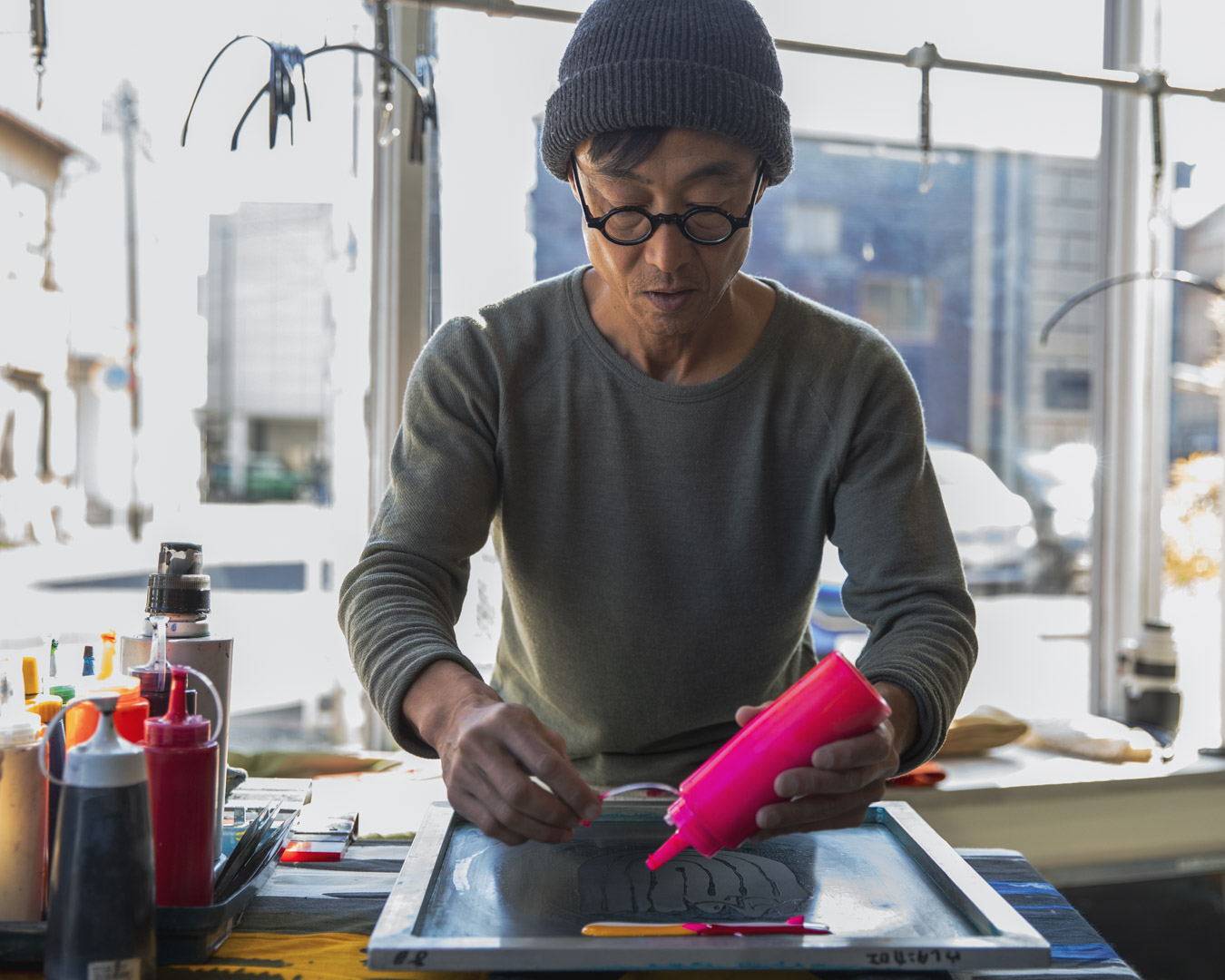
Naomi’s Values and Practices
Values
“Without the existence of nature, there would be no miracles. So, while I don’t own it, if I had to consider myself a steward of it, I would place great value on nature.”
Practices
“I wake up in the morning as early as possible. For me, that’s 4:30 AM. Like the saying ‘A year’s plan starts with New Year’s Day,’ morning is when I am most alert.”
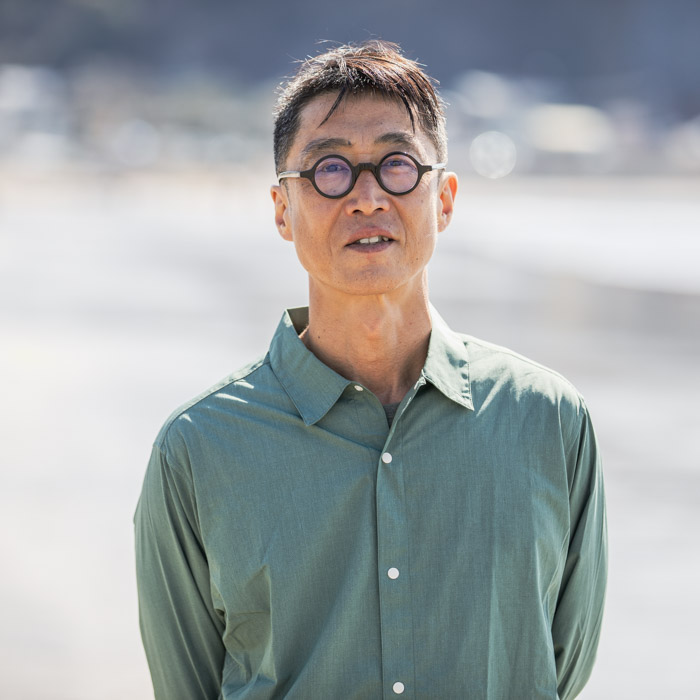
Born in Kamakura, Japan. While studying in the US in 1996, he met the artist Shepard Fairey and stayed on to learn silkscreen printing. After returning to Japan, he started the Daizujikken gallery salon with friends in Nakameguro. In 2012, he launched his Big O project, in which he prints on-site on any material. His activities promote organic cotton and upcycling items. With support from Patagonia, he has held on-site printing events in Japan, South Korea, Australia, Italy and the US (New York and other cities on the West coast). Naomi has also hosted screen printing events at the Yamatomichi Festival and created art and designed tenugui (tea towels) for Yamatomichi’s stores.








